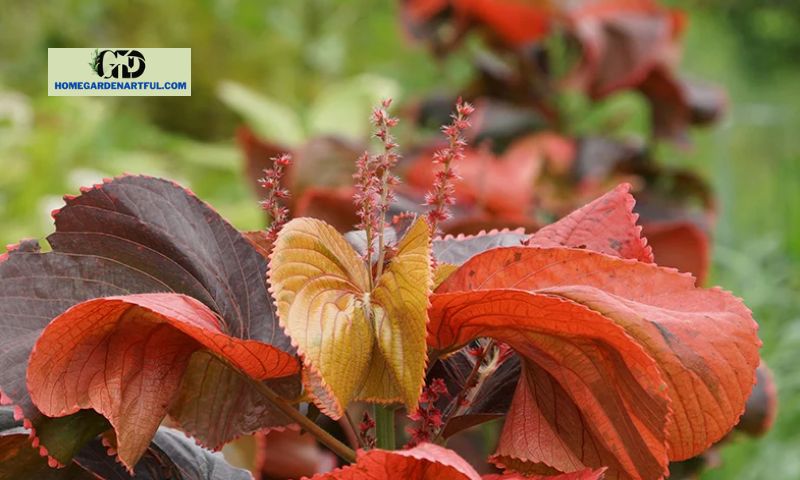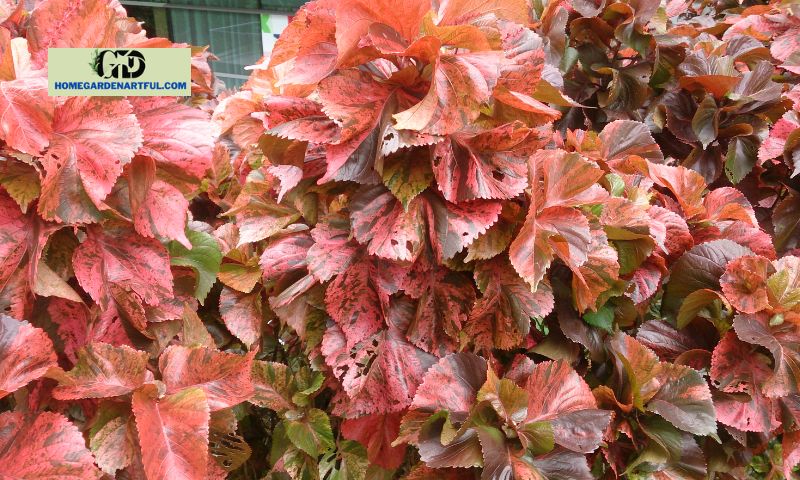The addition of Copper Leaf Plants is fantastic in any garden! The ease of maintenance for copper plants is one of the benefits of this shrub. The family Euphorbiaceae, which includes a sizable number of flowering plants and is also known as the spurge family, is where copper plants are classified. Explore more about this plant at homegardenartful.com!
About Copper Leaf Plant

Acalypha wilkesiana is the scientific name for copper plants, sometimes known as copper leaves.
The evergreen shrub known as the copper plant prefers tropical and subtropical climates. The word “Acalipha” is derived from Greek and describes the Nettle plant’s resemblance to the Copper plant’s leaves. This adaptable shrub has oval or heart-shaped leaves that come in a range of hues, including yellow, green, orange, cream, pink, and copper. The Copper plant has also been gathered for its impressive therapeutic uses, including its capacity to heal skin fungus infections.
You could have symptoms including diarrhea, nausea, and vomiting if you consume big amounts of the Copper plant. The Copperleaf has stunning aesthetic appeal and may provide accentuating details and hues to any space in your house. The Copperleaf is a prized addition to any plant enthusiast’s collection because of its vivid foliage.
Does copper require full sun?
The location of your copper plant is essential for its health and success. The Copperleaf needs full sun to achieve its best display of bright copper-red leaves due to its subtropical inclination. Since copper plants may thrive in areas of indirect light or partly shaded places, it has no negative effects on the health of the plant as a whole.
However, they work best when put in an area with a constant temperature of about 55 degrees Fahrenheit and bright, direct sunlight. Placing your Copperleaf in full sun is crucial since it encourages the exhibition of more vibrantly colored leaves. Consider locations in your house that are near windows or get a lot of sunshine when deciding where to put your plant.
Tropical locations, such as the South Pacific, tropical zones in South and North America, as well as some parts of Southern and Central Florida, are frequently home to copper plants. Copper plants are highly adaptable and can grow successfully in planted containers as well as in the ground as hedges.
Is a copper plant annual or perennial?

This profusion of shrubs is a perennial that works best in warmer climes where it can thrive all year long. Most people think of copper plants as evergreen shrubs that can keep their leaves for more than one growing season. The Copper plant often doesn’t require a lot of upkeep. With its typical waterman sun needs and rich, quickly draining soil, it can live. You can add organic nutrients like manure or compost to your soil to increase its fertility if you are unsure about it.
What size can a copper leaf plant grow to?
Because of its size, Copper Leaf Plant has the potential to grow as tall as six or 10 feet. The Copper plant can also expand up to six to eight feet broad. When provided with the proper quantity of sunlight, water, and soil nutrients, a copper plant can grow into a very large shrub. Remember to place your plants at least 3 to 5 feet apart to prevent any competition for resources.
Common diseases of copper leaf plants

Although the Copper plant is a robust and healthy shrub, it is sadly susceptible to a few pests and illnesses that you should be aware of. The Copper plant will frequently be attacked by mealy bugs and spider mites, which can result in a number of signs that indicate a sick or dying plant. Your Copper plant’s leaves begin to turn pale and sticky once the spider mites have bitten it. You will observe white webbing covering the leaves and generally lower development because of the fungal infections caused by the bugs if your copper plant has a mealybug problem.
It is possible to get rid of these pests from your copper plant with biological control techniques, chemical pesticides, or natural home remedies. By initially removing any harmed or discolored leaves from your Copper plant, you can stop these occurrences. Then, to get rid of these pesky pests, put some rubbing alcohol as well as a dish soap mixture on the leaves of your copper plant. Your Copper plant will be pest-free once you let the leaves lie for a few hours and then wash them with water.
How much water is required by copper plants?
To sustain its health and stunning copper hue, the Copper plant needs the proper amount of water in addition to sunlight. Copper plants usually do best in moist, but not wet, environments. Although this resilient shrub has been known to thrive in dry environments, it is still crucial to water your Copperleaf several times a week to promote healthy growth. It’s crucial to regularly water and mist your Copper plant if you want to provide it the care it needs. Having an irrigation system may keep your plants healthy and well-watered.
Conclusion
Native to the South Pacific, Copper Leaf Plant is primarily known for its landscape applications.
By the entrance, around large trees, and along an empty wall in the yard or garden, they provide a lovely accent. With their wonderful presence, they also enhance the elegance of porches, decks, driveways, and patios.
With its vibrant colors and features, the plant also contributes to highlighting interior beauty. They complement chenille plants well.


